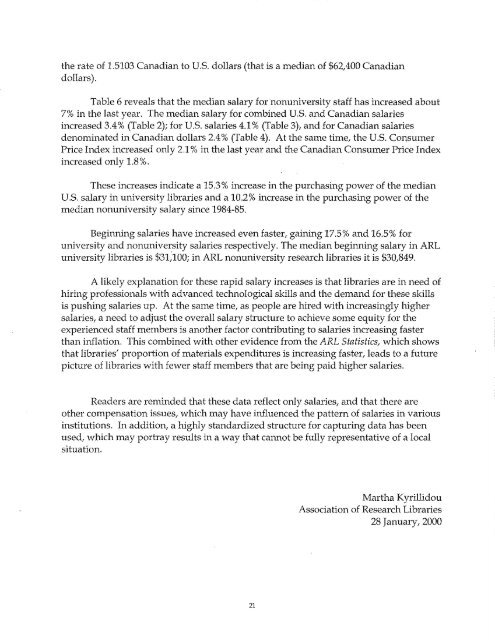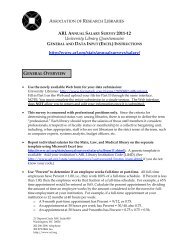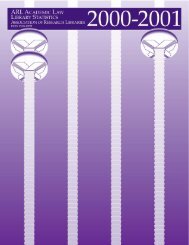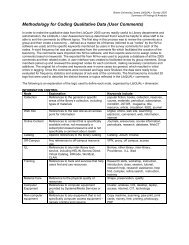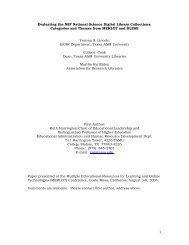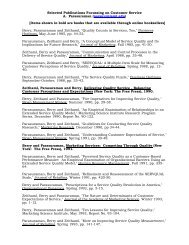Create successful ePaper yourself
Turn your PDF publications into a flip-book with our unique Google optimized e-Paper software.
the rate of 1.5103 Canadian to U.S. dollars (that is a median of $62,400 Canadiandollars).Table 6 reveals that the median salary fornonuniversity staff has increased about7% in the last year. The median salary for combined U.S. and Canadian salariesincreased 3.4 % (Table 2); for U.s. salaries 4.1 % (Table 3), and for Canadian salariesdenominated in Canadian dollars 2.4% (Table 4). At the same time, the U.S. ConsumerPrice Index increased only 2.1 % in the last year and the Canadian Consumer Price Indexincreased only 1.8%.These increases indicate a 15.3% increase in the purchasing power of the medianU.s. salary in university libraries and a 10.2% increase in the purchasing power of themedian nonuniversity salary since 1984-85.Beginning salaries have increased even faster, gaining 17.5% and 16.5% foruniversity and nonuniversity salaries respectively. The median beginning salary in <strong>ARL</strong>university libraries is $31,100; in <strong>ARL</strong> nonuniversity research libraries it is $30,849.A likely explanation for these rapid salary increases is that libraries are in need ofhiring professionals with advanced technological skills and the demand for these skillsis pushing salaries up. At the same time, as people are hired with increasingly highersalaries, a need to adjust the overall salary structure to achieve some equity for theexperienced staff members is another factor contributing to salaries increasing fasterthan inflation. This combined with other evidence from the <strong>ARL</strong> Statistics, which showsthat libraries' proportion of materials expenditures is increasing faster, leads to a futurepicture of libraries with fewer staff members that are being paid higher salaries.Readers are reminded that these data reflect only salaries, and that there areother compensation issues, which may have influenced the pattern of salaries in variousinstitutions. In addition, a highly standardized structure for capturing data has beenused, which may portray results in a way that cannot be fully representative of a localsituation.Martha K yrillidouAssociation of Research Libraries28 January, <strong>2000</strong>21


